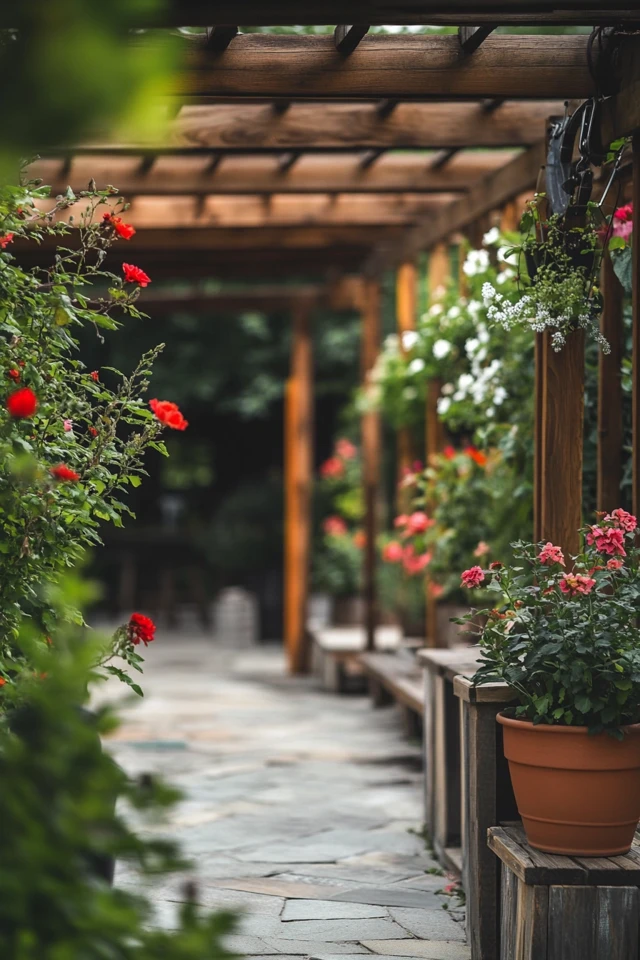A farmhouse garden is more than just an outdoor space—it’s an extension of your home’s charm and personality. With its lush greenery, rustic details, and natural beauty, a farmhouse garden brings warmth and simplicity to your surroundings. Whether you’re growing vegetables, cultivating flowers, or designing a peaceful retreat, a farmhouse garden can seamlessly blend function and aesthetics while creating a connection to the land.
I remember the joy of transforming my backyard into a farmhouse-inspired garden. Adding wooden raised beds, vintage watering cans, and an arbor covered in climbing roses turned an ordinary yard into a welcoming sanctuary. The best part? The garden feels like an outdoor room that’s just as cozy and inviting as the interior of my home.
In this guide, I’ll share practical tips and creative ideas for designing a farmhouse garden that complements your home and lifestyle.
Why a Farmhouse Garden is a Perfect Addition
1. It Enhances Your Home’s Aesthetic
Farmhouse gardens are designed to complement the rustic charm of farmhouse architecture, creating a cohesive look.
2. It’s Functional and Beautiful
From growing fresh produce to providing a peaceful retreat, farmhouse gardens balance practicality with beauty.
3. It Brings Nature Closer to Home
A farmhouse garden fosters a connection to nature, creating a calming and restorative environment.
1. Start with a Natural Color Palette
A farmhouse garden should feel organic and understated, using a natural color palette that blends with the landscape.
- Soft Greens: Incorporate a mix of leafy greens, like sage, olive, and chartreuse.
- Earthy Tones: Use neutral shades like beige, terracotta, and weathered wood for hardscaping.
- Pops of Color: Add muted floral hues like lavender, blush pink, and soft yellow for interest.
Why It Works: A natural color palette creates harmony between your garden and your home’s exterior.
Pro Tip: Match your garden décor, like planters and furniture, to your home’s trim or shutters for a cohesive look.
2. Create a Welcoming Entryway
A farmhouse garden should have a defined and inviting entrance.
- Arbors and Trellises: Install a wooden arbor or trellis adorned with climbing roses or clematis.
- Garden Gates: Use a rustic wooden or wrought-iron gate to frame your garden’s entry.
- Pathways: Lay down stone, gravel, or brick paths that lead visitors into the garden.
Why It Works: A welcoming entry sets the tone for your garden and draws people in.
Pro Tip: Line pathways with lavender or low hedges for a classic farmhouse touch.
3. Incorporate Raised Garden Beds
Raised garden beds are a hallmark of farmhouse gardens, offering both function and style.
- Materials: Use untreated wood, galvanized metal troughs, or stone to build your beds.
- Plant Choices: Grow a mix of vegetables, herbs, and flowers for a diverse and vibrant garden.
- Why It Works: Raised beds create a clean, organized look while making gardening more accessible.
Pro Tip: Add wooden signs or chalkboard labels to your beds for a charming, rustic detail.
4. Use Rustic Hardscaping
Hardscaping elements provide structure and visual interest in your garden.
- Fencing: Choose wooden picket fences or split-rail fencing for a classic farmhouse vibe.
- Edging: Use natural stone, bricks, or reclaimed wood to define garden borders.
- Patios and Seating Areas: Incorporate flagstone or gravel patios with farmhouse-style furniture for a cozy gathering spot.
Why It Works: Rustic hardscaping complements the natural elements of the garden while adding functionality.
5. Choose a Mix of Perennials and Annuals
Farmhouse gardens often feature an abundance of flowers that bloom throughout the seasons.
- Perennials: Plant long-lasting blooms like peonies, black-eyed Susans, and hydrangeas.
- Annuals: Add colorful accents with marigolds, zinnias, and cosmos.
- Climbing Plants: Include wisteria, morning glory, or honeysuckle to soften fences and trellises.
Why It Works: A mix of perennials and annuals ensures your garden stays vibrant year-round.
Pro Tip: Group plants in clusters of three or five for a more natural and visually appealing layout.
6. Incorporate Vintage and Rustic Décor
Farmhouse gardens shine when decorated with vintage and rustic details.
- Repurposed Items: Use old wheelbarrows, wooden crates, or galvanized buckets as planters.
- Lighting: Add string lights, lanterns, or mason jar candles to create a magical ambiance in the evenings.
- Garden Signs: Include wooden or metal signs with hand-painted phrases like “Fresh Flowers” or “Herbs.”
Why It Works: These touches add personality and charm while reinforcing the farmhouse aesthetic.
Pro Tip: Visit thrift stores or flea markets for unique, affordable pieces to incorporate into your garden.
7. Include Functional Features
A farmhouse garden should be as practical as it is beautiful.
- Compost Bin: Use a wooden or metal compost bin to recycle garden waste and enrich your soil.
- Rain Barrels: Collect rainwater in decorative barrels to water your plants sustainably.
- Tool Storage: Install a small garden shed or wall-mounted hooks for organizing tools.
Why It Works: These features enhance your garden’s usability while keeping it organized and eco-friendly.
Pro Tip: Paint your compost bin or rain barrel to match your garden’s color scheme for a cohesive look.
8. Create a Relaxing Seating Area
A farmhouse garden is the perfect place to unwind, so include a cozy seating area.
- Furniture: Choose wooden benches, Adirondack chairs, or wrought-iron furniture with cushioned seating.
- Shade: Add a pergola, umbrella, or tree canopy for sun protection.
- Accessories: Decorate with throw pillows, outdoor rugs, and blankets for added comfort.
Why It Works: A seating area transforms your garden into a retreat for relaxation and connection.
Pro Tip: Position your seating area near fragrant flowers or herbs for a sensory experience.
9. Add a Water Feature
A water feature enhances the tranquility of a farmhouse garden.
- Fountains: Choose a simple stone or metal fountain for a rustic look.
- Birdbaths: Include a vintage birdbath to attract wildlife and add charm.
- Ponds: For larger spaces, consider a small pond with water lilies and koi fish.
Why It Works: The sound of running water creates a peaceful atmosphere while complementing the garden’s natural elements.
Pro Tip: Use solar-powered water features for an eco-friendly option.
10. Light Up Your Garden
Farmhouse gardens come alive at night with the right lighting.
- Pathway Lights: Line paths with solar-powered lights or lanterns for safety and ambiance.
- String Lights: Hang fairy lights or Edison bulbs above seating areas or arbors for a cozy glow.
- Accent Lighting: Use uplighting to highlight trees, arbors, or water features.
Why It Works: Lighting extends the usability of your garden into the evening, creating a magical outdoor space.
Pro Tip: Use warm-toned bulbs to maintain the soft, rustic feel of a farmhouse garden.
Picture Gallery
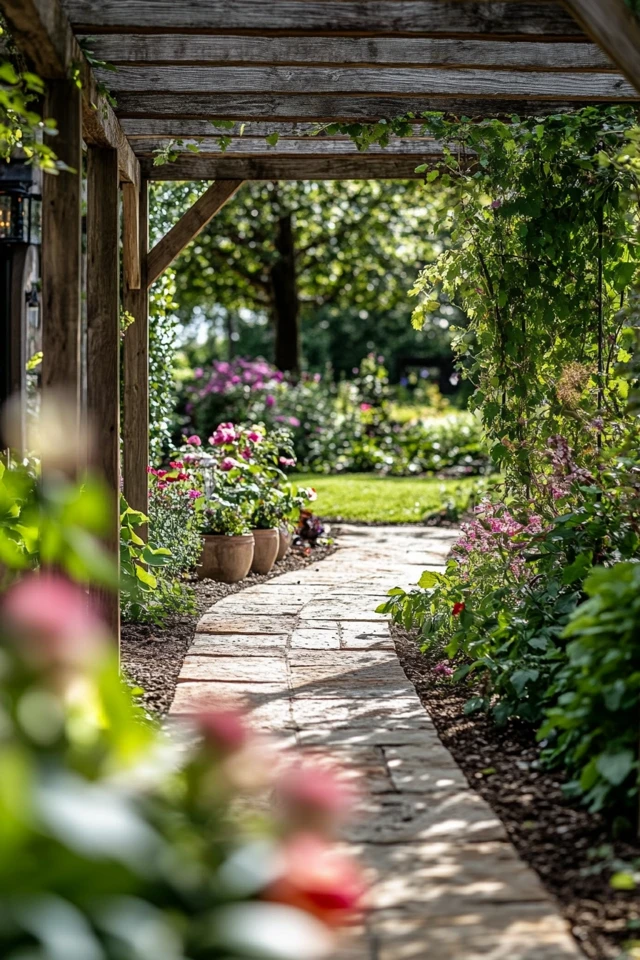

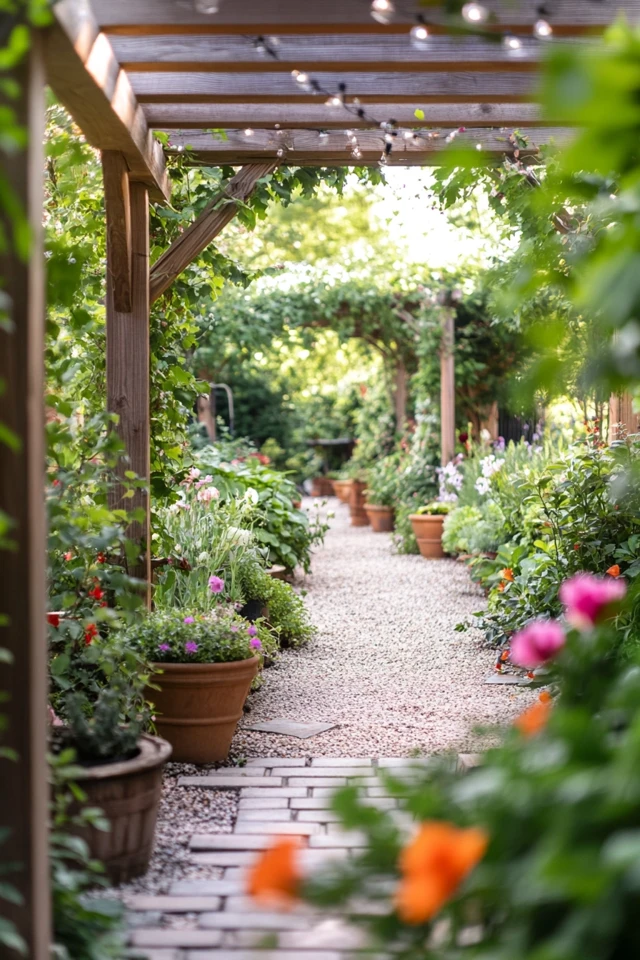
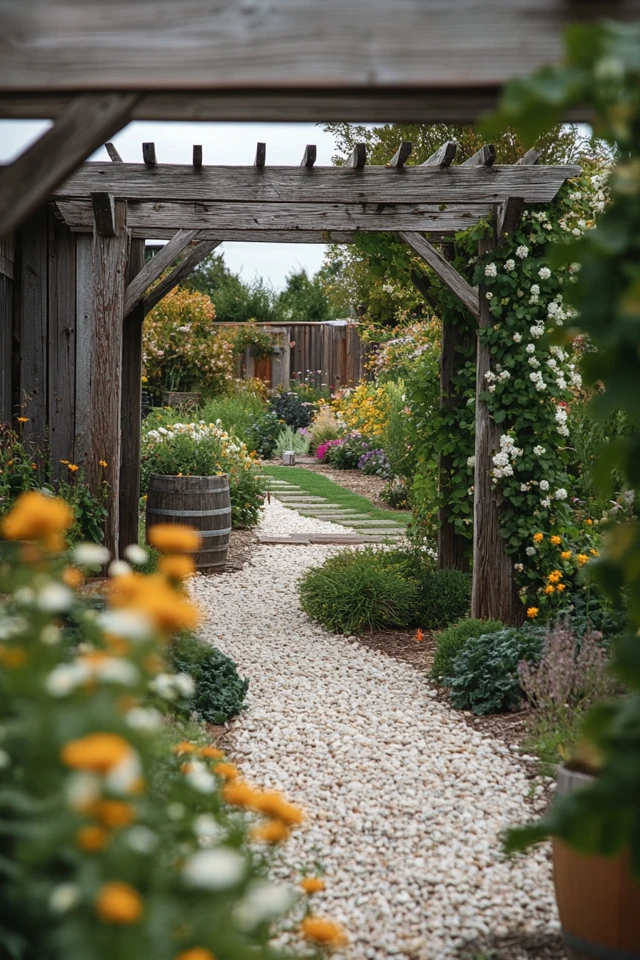
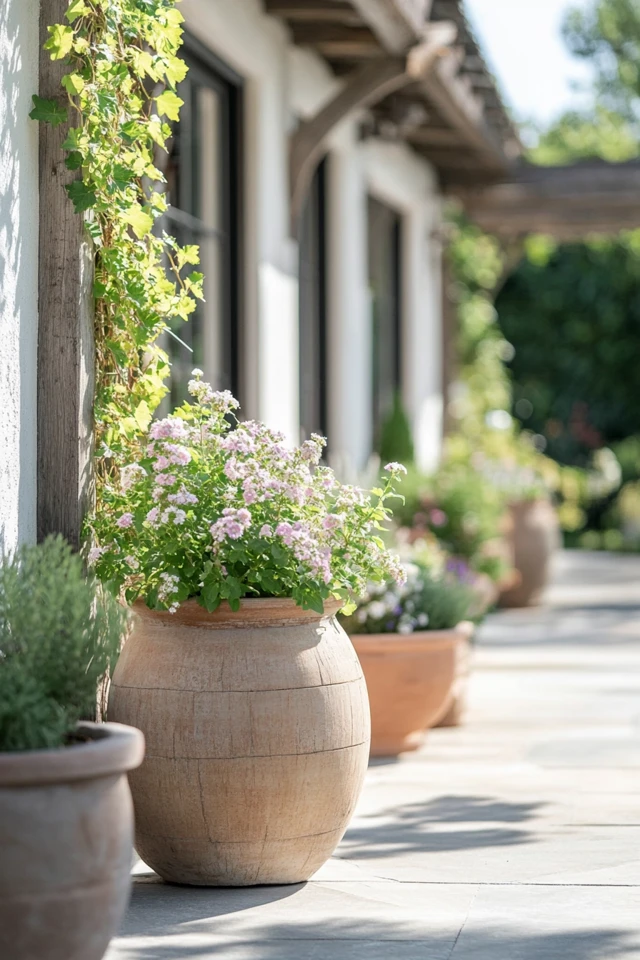
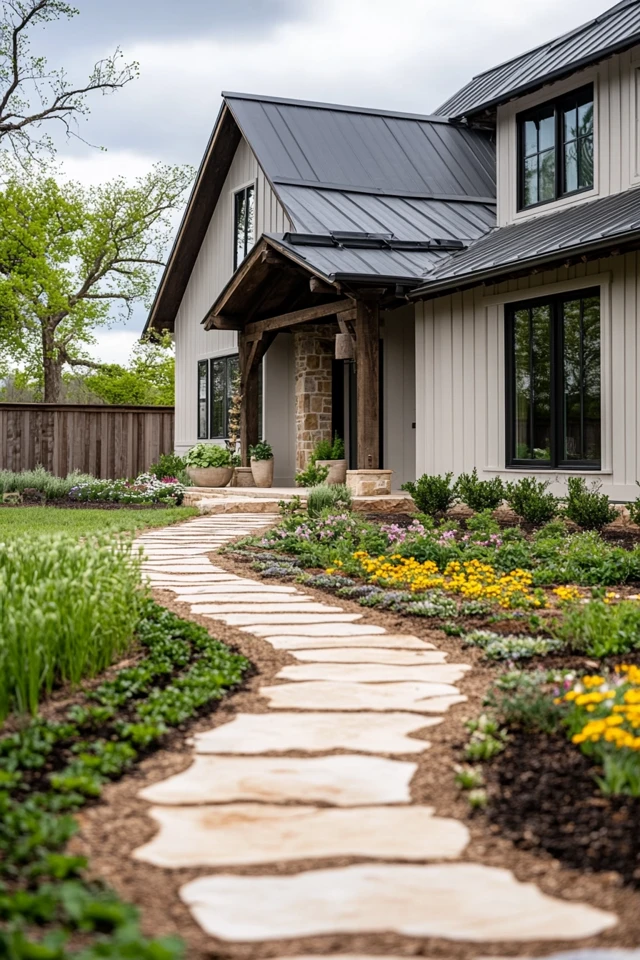
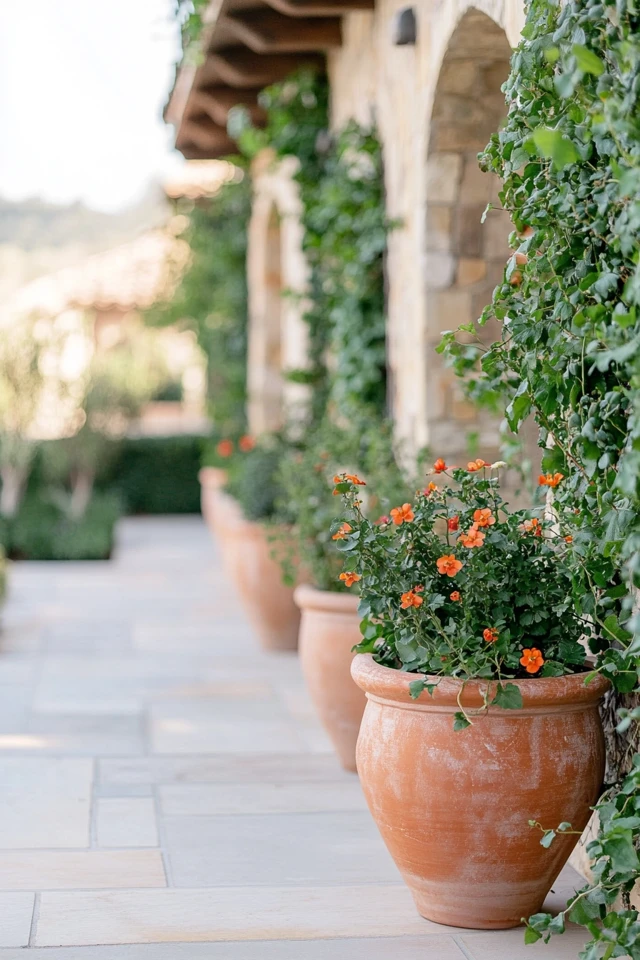
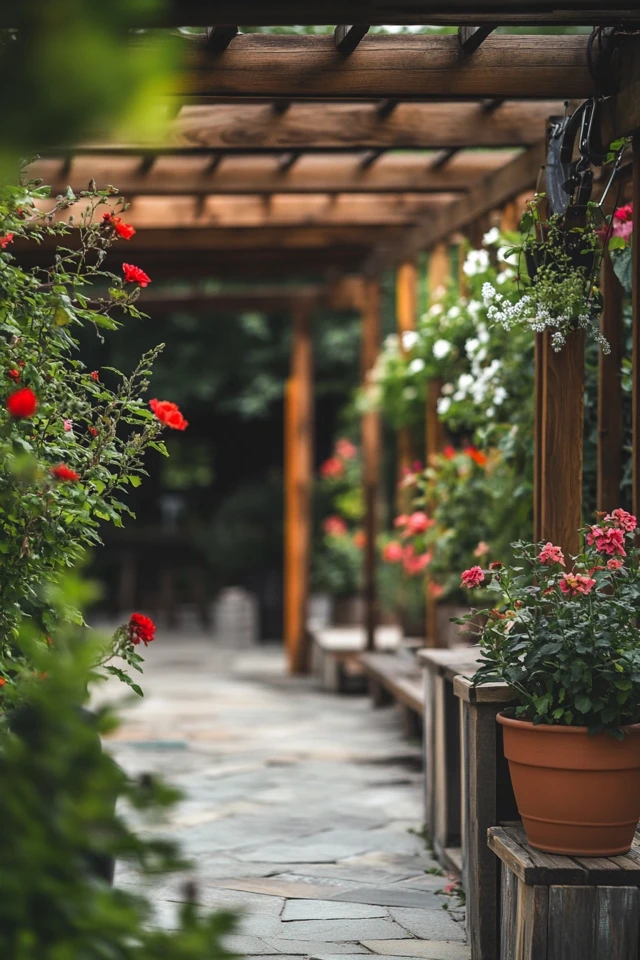
Tips for a Cohesive Farmhouse Garden Design
- Blend Old and New: Combine vintage pieces with fresh plantings for a curated, lived-in look.
- Keep It Simple: Stick to natural materials and avoid overly modern or ornate elements.
- Focus on Functionality: Designate areas for planting, relaxing, and working to ensure your garden meets your needs.
- Think Seasonally: Plant flowers and crops that bloom at different times to keep your garden vibrant year-round.
Conclusion
A farmhouse garden is the perfect blend of beauty, function, and rustic charm. With thoughtful design elements like raised beds, natural pathways, and vintage décor, you can create a garden that feels like an extension of your home. Whether you’re growing fresh herbs, entertaining guests, or simply enjoying the peace and quiet, your farmhouse garden will become a space you love to spend time in.
By incorporating natural materials, lush plantings, and functional features, you can design a garden that complements your farmhouse aesthetic and creates a connection to nature.
FAQs
1. What types of plants work best in a farmhouse garden?
Perennials like hydrangeas and peonies, herbs like rosemary and thyme, and climbing plants like roses and wisteria are all great options.
2. How do I make a small garden feel larger?
Use vertical elements like trellises, climbing plants, and hanging baskets to maximize space and draw the eye upward.
3. What materials are best for raised garden beds?
Untreated wood, galvanized metal, and stone are durable and align with the rustic farmhouse style.
4. How can I add seasonal interest to my farmhouse garden?
Plant a mix of flowers and crops that bloom at different times, and incorporate seasonal décor like pumpkins in fall or garlands in winter.
5. How do I maintain a farmhouse garden?
Regularly weed, water, and prune plants, and use mulch to retain moisture and keep the soil healthy. Incorporate compost and organic fertilizers for sustainable gardening practices.

